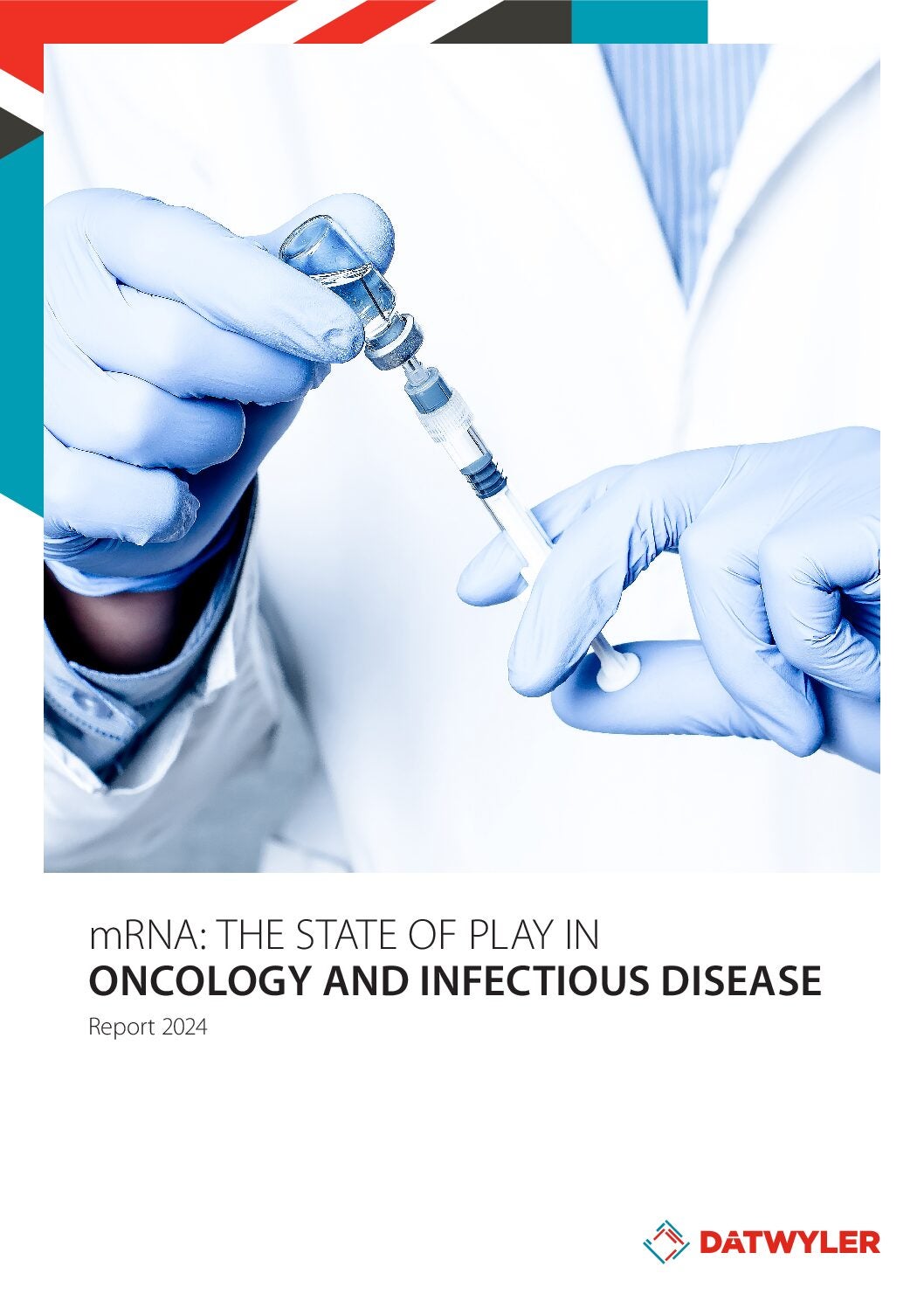
In early 2020, with the world ground to a halt, long-studied messenger RNA (mRNA) technology helped scientists develop COVID-19 vaccines within the first 100 days of the pandemic. There is no question that this unique technology played a pivotal role in enabling such a rapid vaccine development timeline. For context, vaccines can usually take years – even up to a decade – of research and development, whereas an established mRNA platform can be adapted to different pathogens within hours.
mRNA offers other clear advantages over traditional vaccine modalities, such as its non-infectious and non-integrative nature, as well as its cell-independent manufacturing process. Cell-free manufacturing contributes to a much faster turnaround than cell-based manufacturing, circumventing the well-documented challenges of high-scale viral vector production, for instance.
While mRNA’s potential is clear to see, there are still significant challenges facing the field, particularly issues around stability, immunogenicity, and delivery. Delivery vehicle systems are essential in protecting the mRNA cargo against degradation or immune recognition. In addition, recommended storage temperatures currently lie in the ultra-cold range. Pfizer/BioNTech’s COVID-19 vaccine, for example, required storage at -80°C.
What to expect from the next wave of mRNA vaccines
The success of mRNA during the COVID-19 pandemic has strengthened innovation in this field. According to GlobalData’s Drugs database, there are now just over 1,000 mRNA drugs in the pipeline as of March 2024. The vast majority of the candidates are in the early stages of drug development, with 255 in discovery and 327 in preclinical. Further down the pipeline, there is a total of 33 mRNA candidates in Phase III trials, plus seven drugs nearing potential approvals in the pre-registration phase.
Predictably, the infectious disease therapy area accounts for the vast majority of these candidates, with US-based Moderna dominating the late-stage pipeline for infectious disease mRNA drugs. There are multiple late-stage mRNA candidates for COVID-19, Influenza A, Influenza B, respiratory syncytial virus (RSV), and cytomegalovirus (CMV). The potential for mRNA’s next big commercial success may be strongest in CMV, an indication for which there is a large unmet need. Moderna currently has a CMV mRNA vaccine in Phase III trials, for which GlobalData predicts a 37% likelihood of approval.
There is also significant potential for mRNA in oncology as scientists attempt to use the molecules to enhance the immune system’s ability to recognise and destroy cancer cells – an application that researchers were pursuing decades before the coronavirus pandemic struck. Such mRNA-based vaccines could be used as both a preventative measure in individuals with a high risk of developing a particular cancer type, for example, or as a therapeutic agent to treat an existing malignancy. In order, the five cancer types with the highest numbers of active mRNA candidates are melanoma, non-small cell lung cancer, pancreatic cancer, colorectal cancer, and ovarian cancer. Meanwhile, key industry players in the clinical trial pipeline include Moderna, BioNTech, CureVac, Cartesian Therapeutics, and Omega Therapeutics.
In collaboration with GlobalData, Datwyler, a leading provider of parenteral packaging components, has recently published a report covering the rise of mRNA and exploring the modality’s potential. The report draws on drug pipeline data to analyse the current state of play in both infectious disease and oncology R&D, discussing the opportunities and challenges in both. While exploring challenges, the report focuses on primary packaging considerations, which play a critical role in getting these innovative new drugs to patients safely and effectively.
Please download the report below.



